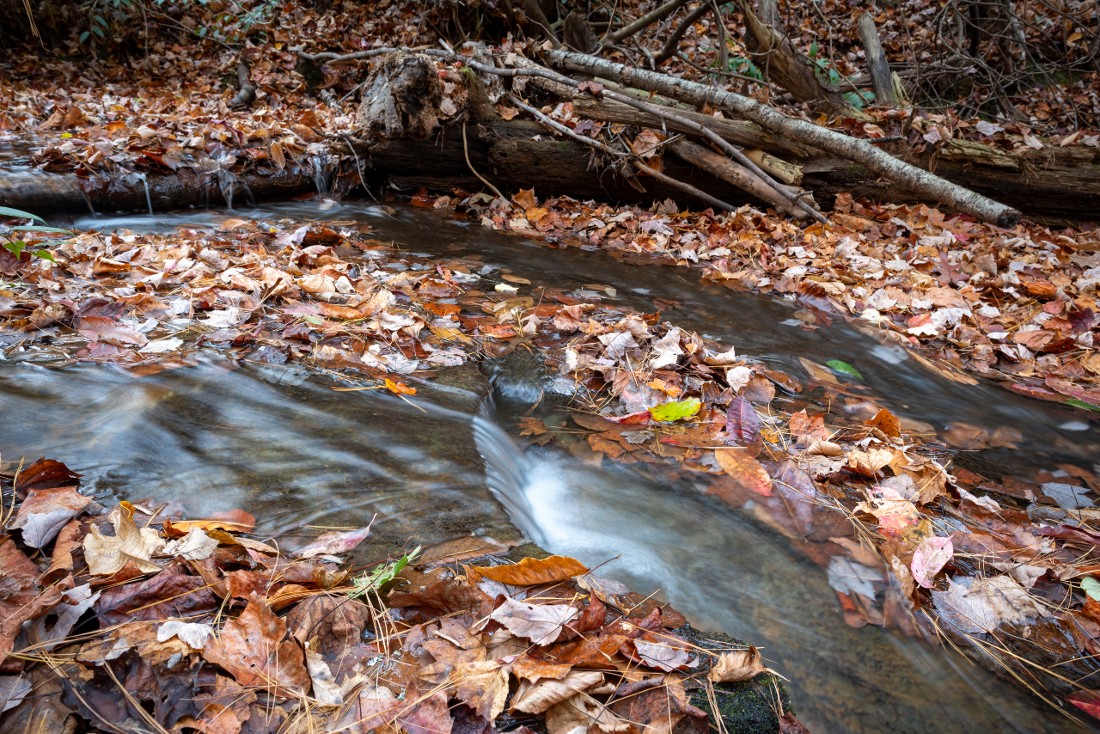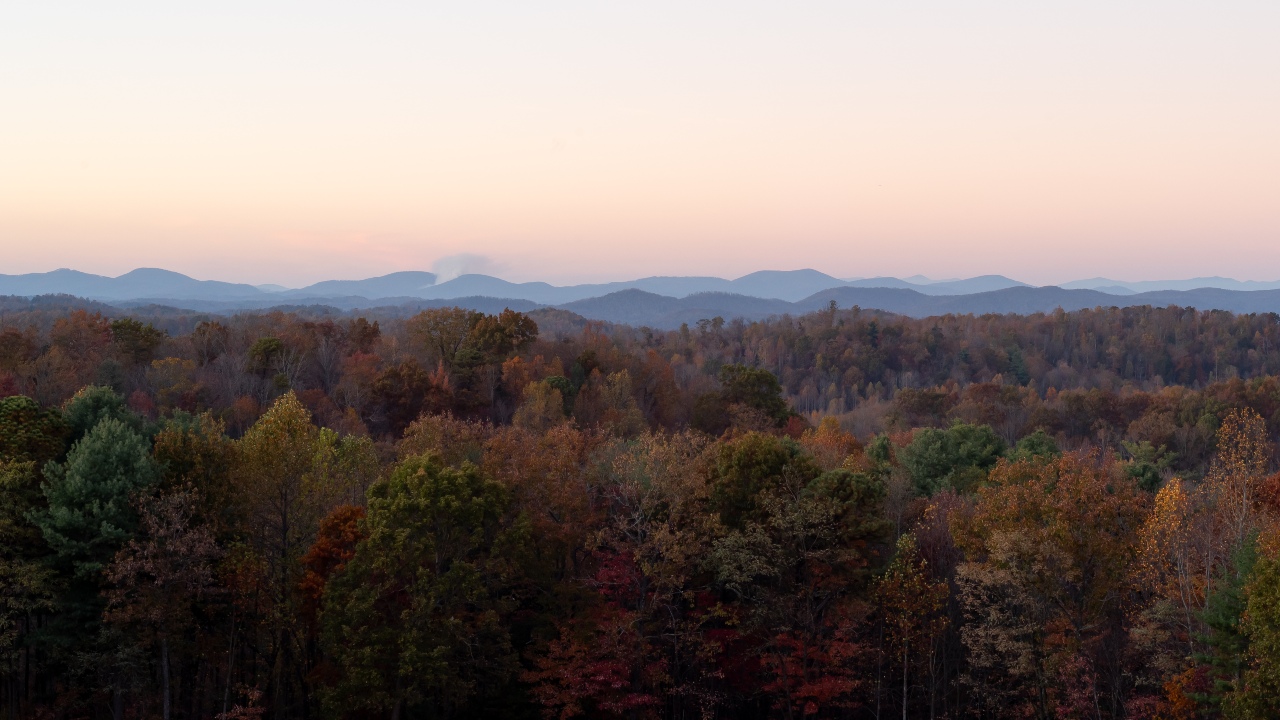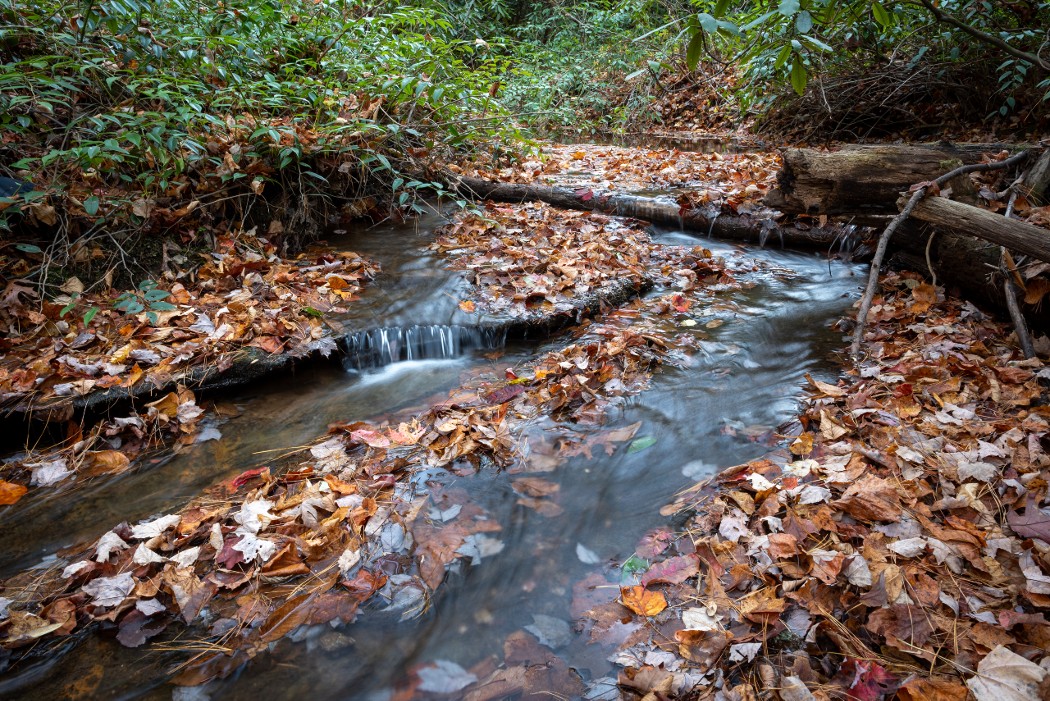Tributary of North Pacolet River Protected
Couple in Tryon have protected approximately 500 acres

When Bob Tobey and Donna Martin bought their land Polk County near Pearson’s Falls, there was one spot that Bob’s daughter suggested would make a perfect homesite. It was tucked away in the woods without much of a view, but it was alongside a beautiful stream. Bob says the woods in that part of their property are special because they’re so pristine, quiet, and peaceful.
Ultimately, they didn’t choose that spot for their home. They built their house, along with barns and pastures for their animals (including a zebra and a zonkey) higher up where they can enjoy long-range mountain views.

They went on to protect this clear-flowing stream and the surrounding woods by donating a conservation easement to Conserving Carolina on 109 acres at the end of 2023. When they first bought their land, called Greenhaven Farm, in 2000, Bob and Donna’s intention was to add land to conservation and this is the third parcel they have protected so far. In all, they have protected approximately 500 acres.
This newly protected land includes nearly a mile of clear headwater streams that flow into a tributary of Fork Creek, which runs into the gorgeous North Pacolet River.
Bob, who calls himself a “wannabe naturalist,” notes that every spring a stunning cluster of pink ladyslippers blooms in this part of the woods. Flowering shrubs also help to make this forest a natural garden—such as flame azaleas, rhododendrons, mountain laurel, mountain magnolia, dogwood, witch hazel, and hearts-a-bustin’. A survey of plant and animal life on the property found potential habitat for five species of rare plants as well as seven species of rare animals, including salamanders, bats, crayfish, and brook trout.

This report, by biologist Kevin Caldwell, also notes that this property earns the highest rank for climate resilience—meaning that it could be key to survival for plants and animals that need to adapt to climate change. This is for two reasons: 1) the land offers many different microhabitats that can meet specific needs for species needing new homes, and 2) the property is connected to unfragmented natural areas for species on the move.
The conservation easement allows carefully managed forestry. However, no logging is permitted within 100 feet on either side of streams. As they were learning about natural resources on this tract, Bob and Donna discovered that the land includes four rare natural communities, which make up 30% of the tract. Generously, they went further than they had originally planned and ruled out future logging in any of these natural communities.

If Bob and Donna had not bought Greenhaven Farm with conservation as a goal, it is highly likely that the land would be developed—by now or in the future. Already, at various points, past owners had planned to build a subdivision and a private airstrip, although those plans fell through.
Bob and Donna first protected part of their land through a bargain sale of more than 300 acres to the North Carolina Plant Conservation Program. Protected in 2005, this nature preserve harbors exceptional biodiversity including an endangered wildflower–the white irisette. Then, in 2022, they donated a conservation easement on 79 acres of working forest to Conserving Carolina, with wide no-cut buffers along streams. With this conservation easement on another 109 acres, they have now protected approximately 500 acres, helping to form a corridor of conservation land in a part of the mountains with great beauty and biodiversity.
The two parcels under conservation easement still belong to Bob and Donna, but they have permanently given up development rights and protected natural resources. These restrictions will apply not only to themselves but to all future owners. For its part, Conserving Carolina has taken on the responsibility to ensure that these protections are upheld over time—that the land is truly protected forever. Learn about conservation options for landowners.
Bob says, “We’re just trying to make it be a home for nature, for the flora and the fauna, and to not be developed.”